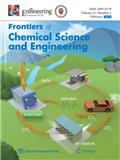
化学科学与工程前沿(英文版)(Frontiers of Chemical Science and Engineering) 知网万方目次维普目次
- CSCD
- 科核
- 高T2
- EI(中国2024)
- 主管单位:
教育部
- 主办单位:
高等教育出版社有限公司、中国工程院、天津大学
- 国际刊号:
2095-0179;EISSN2095-0187
- 国内刊号:
11-5981/TQ
- 学科分类:
- 字数:
18000-54000
- 有无基金:
/有基金 100.0%
- 周期:
CN外文-月刊
- 特殊属性:
第一批认定学术期刊
- 电话:
010-58556658;87402150
- 邮箱:
fcse@tju.edu.cn、chengll@hep.com.cn(官网邮箱)
- 复合因子:
0
- 综合因子:
0
- 收录:
知网,万方目次,维普目次
- 级别:
CSCD,科核,高T2,EI(中国2024)
期刊简介
《化学科学与工程前沿》期刊已被查看: 次
更新频次
单位占比
一作占比
/有基金-100.0%投稿指南
1、投稿方式:在线投稿。
2、刊内网址:(202306期)
http://journal.hep.com.cn
https://link.springer.com
3、官网网址:http://journal.hep.com.cn/fcse/
https://www.springer.com/journal/11705
https://link.springer.com/journal/11705/
4、、投稿系统:
http://mc.manuscriptcentral.com/fcse
5、出刊日期:月刊,每月出版1期。
2023年8月28星期一
《化学科学与工程前沿(英文版)》投稿指南
Guide for Authors (June, 2023)
【官网信息】
FRONTIERS OF CHEMICAL SCIENCE AND ENGINEERING
Guide for Authors (June, 2023)
1 General Information
Frontiers of Chemical Science and Engineering is an international peer-reviewed academic journal sponsored by the Ministry of Education of China. The journal is administered by Higher Education Press, Chinese Academy of Engineering and Tianjin University, jointly published by Higher Education Press and Springer-Verlag on a monthly basis in English. Online versions are available at https://link.springer.com/journal/11705/volumes-and-issues or http://journal.hep.com.cn/fcse.
1.1 General
All contributions should conform to the Aims and Scope shown at the front of the journal. The Editors welcome contributions to new topics that fall within the broad scope of Chemical Science and Engineering.
1.2 Ethical Responsibilities of Authors
This journal is committed to upholding the integrity of the scientific record. As a member of the Committee on Publication Ethics (COPE) the journal will follow the COPE guidelines (http://publicationethics.org/resources/guidelines) on how to deal with potential acts of misconduct.
1.3 Disclosure of Potential Conflict of Interests
A conflict of interest may exist when an author or the author’s institution has a financial or other relationship with other people or organizations that may inappropriately influence the author’s work. A conflict can be actual or potential and full disclosure to the Journal is the safest course. All submissions to the Journal must include disclosure of all relationships that could be viewed as presenting a potential conflict of interest. The Journal may use such information as a basis for editorial decisions and may publish such disclosures if they are believed to be important to readers in judging the manuscript. A decision may be made by the Journal not to publish on the basis of the declared conflict.
1.4 Statement of Human and Animal Rights
When reporting studies that involve human participants, authors should include a statement that the studies have been approved by the appropriate institutional and/or national research ethics committee and have been performed in accordance with the ethical standards as laid down in the 1964 Declaration of Helsinki and its later amendments or comparable ethical standards. If doubt exists whether the research was conducted in accordance with the 1964 Helsinki Declaration or comparable standards, the authors must explain the reasons for their approach, and demonstrate that the independent ethics committee or institutional review board explicitly approved the doubtful aspects of the study.
1.5 Articles Types
Research articles should be complete and authoritative accounts of work which have special significance, general interest and which are presented clearly and concisely. Research articles should be in the range of 8‒12 journal pages in length. In research articles, author’s self-citation rate should not exceed 20%.
Review articles In addition to undergoing the same rigorous level of technical peer-review as Research articles, Review articles will be critiqued based on the general impact of the field being reviewed, the relevance of the field to experimental mechanics, preexisting reviews of the field, and acknowledgement of the contributing author as a dominant figure in the field. Review articles typically occupy 10‒15 journal pages. In review articles, author’s self-citation rate should be lower than 25%.
Communications dealing with new ideas and specific points rather than developing a theme, and should not exceed 4 journal pages.
Views & Comments presenting important views and comments on keys issues, significant progress, or crucial problems that need to be solved, and may be submitted by invitation. For the length of Views & Comments, up to 4 pages can be accepted.
Note: in formatted papers, there are 600 words in each journal page on average (figures, tables, references and footnotes are included).
2 Submission of Manuscripts
Authors can submit their papers via the online submission system: http://mc.manuscriptcentral.com/fcse, the Chief Editor and one of the Associate Editors with whom the author can communicate efficiently or whose expertise covers the content of the paper. Submit your manuscript as a Word file. Other file types are not suitable for production. It is important that the file be saved in the native format of the wordprocessor used. All correspondence, including the editor’s decision and request for revisions, will be by e-mail. After reviewing process, the manuscript will be finally judged by one of the editors who have the right to accept or reject a paper.
……
更多详情:
https://journal.hep.com.cn/fcse/EN/column/column229.shtml
上一篇:河北医科大学学报(不收版面费审稿费)下一篇:数学物理学报(英文版)(Acta Mathematica Scientia)(原:Acta Mathematica Scientia(English Series))
《化学科学与工程前沿》同类化学期刊
-
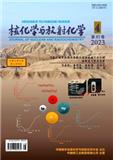
核化学与放射化学
北核,CSCD,科核,高T2
CN中文-双月刊影响因子0.618
-
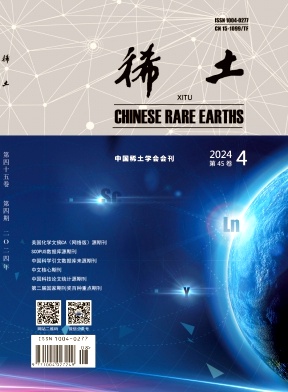
稀土
北核,科核,CSCD扩,武A-,高T2
CN中文-双月刊影响因子1.041
-
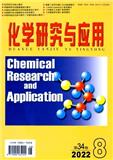
化学研究与应用
北核,科核,武B+
CN中文-月刊影响因子0.911
-
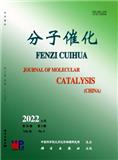
分子催化(中英文)
北核,科核,CSCD扩,武A
CN中文-双月刊影响因子1.802
-
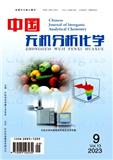
中国无机分析化学(原:中国无机分析化学文摘)
北核,高T3,CACJ-权威,武B+
CN中文-月刊影响因子1.591
-
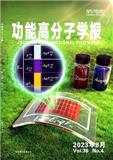
功能高分子学报
北核,CSCD,科核,高T2,武B+
CN中文-双月刊影响因子1.206
-

质谱学报
北核,CSCD,科核,高T2,EI(中国2024),武B+
CN中文-双月刊影响因子1.348
-
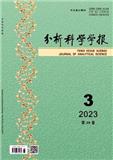
分析科学学报
北核,科核,CSCD扩,武B+
CN中文-双月刊影响因子1.227
常见问题
-
化学科学与工程前沿杂志社官网、联系方式是什么?
化学科学与工程前沿杂志社官网:http://journal.hep.com.cn/fcse/
投稿网址:http://mc.manuscriptcentral.com/fcse联系电话:010-58556658;87402150
投稿邮箱:fcse@tju.edu.cn、chengll@hep.com.cn(官网邮箱) -
化学科学与工程前沿杂志是核心期刊么?
化学科学与工程前沿是核心期刊,级别是:CSCD,科核,高T2,EI(中国2024), 是:化学分类下的知网,万方目次,维普目次收录的期刊。
-
请问你们是化学科学与工程前沿杂志社吗?
我们不是《化学科学与工程前沿》杂志社。本站主要从事期刊信息展示与期刊推荐,不是任何杂志官网,直投稿件请联系杂志社。本站仅提供免费的学术指导、论文辅导、期刊投稿信息整理收集服务。
-
你们指导服务后可以保证文章被发表吗?
期刊发表的成功与否,主要取决于文章内容的质量。编辑老师会根据研究领域、创新性等多因素进行考量。我们会帮助您理解期刊的发表要求,助力提升发表几率,从而增加发表的机会。
-
晋级论文能否在报纸上发表?
在学术界,论文的发表往往被视为研究者职业发展的重要一环。晋级论文,即为了获得更高职称或学术地位而撰写的学术论文,通常需在专业期刊上发表。然而,许多人可能会问
